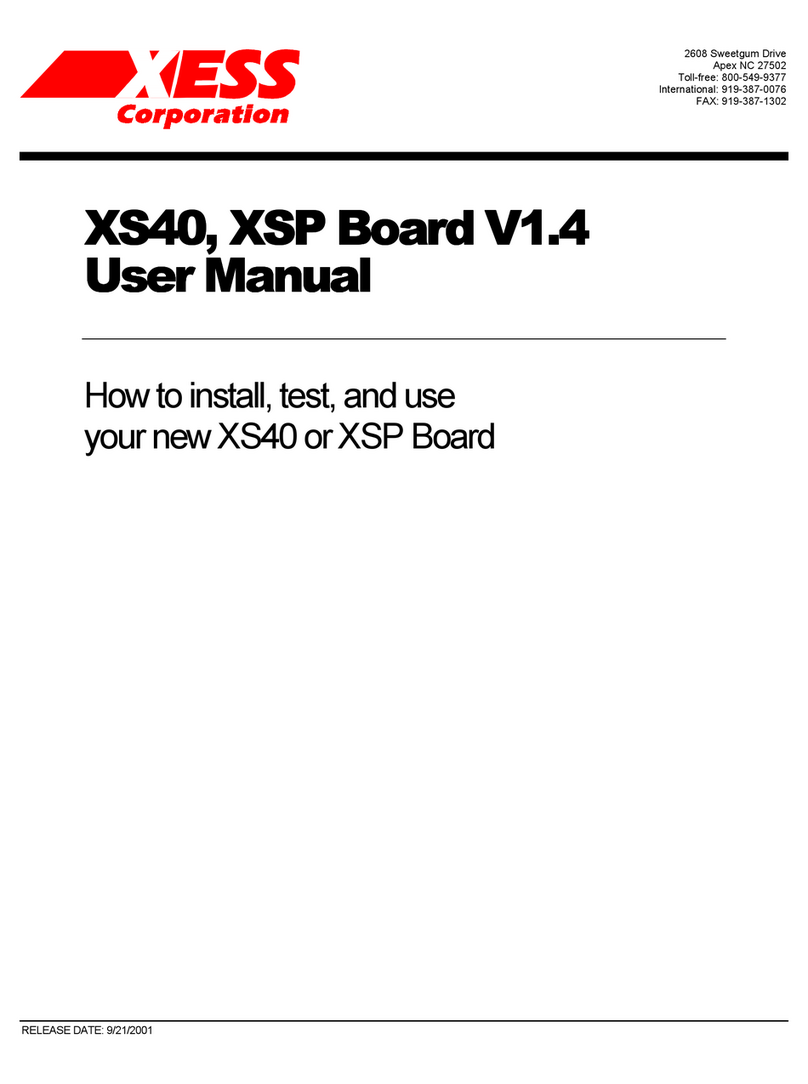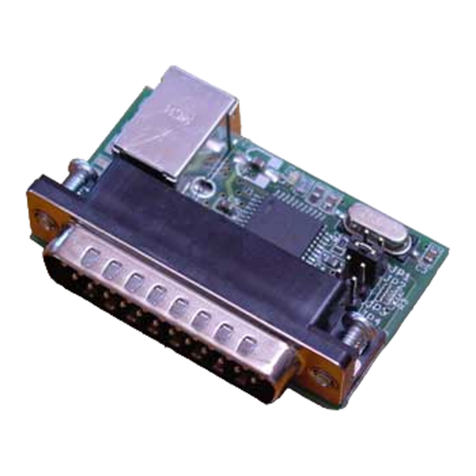
XStend Board Manual
XESS Corporation
Copyright ©1998 by X Engineering Software Systems Corporation.
All XS-prefix product designations are trademarks of X Engineering Software Systems.
All XC-prefix product designations are trademarks of Xilinx
ABEL is a trademark of DATA I/O Corporation.
All rights reserved. No part of this publication may be reproduced, stored in a retrieval system, or transmitted, in
any form or by any means, electronic, mechanical, photocopying, recording, or otherwise, without the prior
written permission of the publisher. Printed in the United States of America.
Limited Warranty
X Engineering Software Systems Corp. (XESS) warrants that the Product, in the course of its normal use, will be
free from defects in material and workmanship for a period of one (1) year and will conform to XESS’s
specification therefor. This limited warranty shall commence on the date appearing on your purchase receipt.
XESS shall have no liability for any Product returned if XESS determines that the asserted defect a) is not present,
b) cannot reasonably be rectified because of damage occurring before XESS receives the Product, or c) is
attributable to misuse, improper installation, alteration, accident or mishandling while in your possession. Subject
to the limitations specified above, your sole and exclusive warranty shall be, during the period of warranty
specified above and at XESS’s option, the repair or replacement of the product. The foregoing warranty of XESS
shall extend to repaired or replaced Products for the balance of the applicable period of the original warranty or
thirty (30) days from the date of shipment of a repaired or replaced Product, whichever is longer.
THE FOREGOING LIMITED WARRANTY IS XESS’S SOLE WARRANTY AND IS APPLICABLE ONLY TO
PRODUCTS SOLD AS NEW. THE REMEDIES PROVIDED HEREIN ARE IN LIEU OF a) ANY AND ALL
OTHER REMEDIES AND WARRANTIES, WHETHER EXPRESSED OR IMPLIED OR STATUTORY,
INCLUDING BUT NOT LIMITED TO, ANY IMPLIED WARRANTY OF MERCHANTABILITY OR FITNESS
FOR A PARTICULAR PURPOSE, AND b) ANY AND ALL OBLIGATIONS AND LIABILITIES OF XESS
FOR DAMAGES INCLUDING, BUT NOT LIMITED TO ACCIDENTAL, CONSEQUENTIAL, OR SPECIAL
DAMAGES, OR ANY FINANCIAL LOSS, LOST PROFITS OR EXPENSES, OR LOST DATA ARISING OUT
OF OR IN CONNECTION WITH THE PURCHASE, USE OR PERFORMANCE OF THE PRODUCT, EVEN IF
XESS HAS BEEN ADVISED OF THE POSSIBILITY OF SUCH DAMAGES.
In the United States, some statutes do not allow exclusion or limitations of incidental or consequential damages,
so the limitations above may not apply to you. This warranty gives you specific legal rights, and you may also
have other rights which vary from state to state.
Table of Contents
1 XStend Overview ......................................................... 3
2 XStend Board Features ................................................... 3
2.1 XS40/XS95 Board Mounting Area ........................................ 4
2.2 LEDs ................................................................. 4
2.3 Switches ............................................................. 6
2.4 VGA Interface ........................................................ 7






























